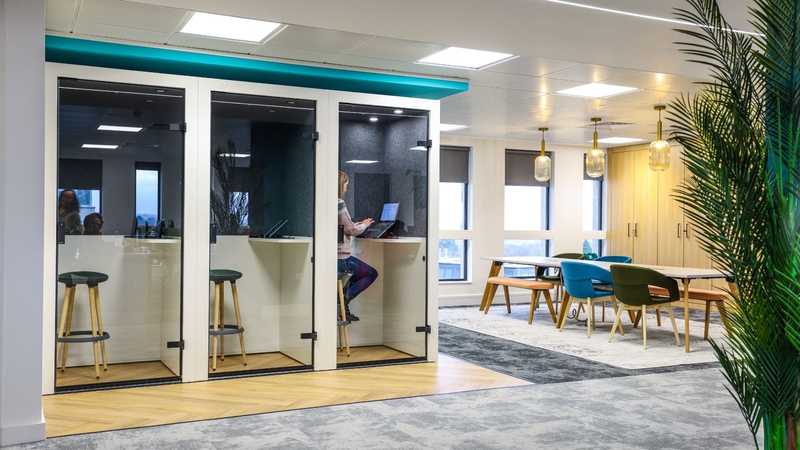With a finite talent pool to choose from, how do you get the best minds to accept a position with your business?
It would be foolish to suggest that technology has all the answers, but it is becoming clear that tech is having a major impact on recruitment. Technology is influencing both the job seeking process and how HR departments go about identifying and reaching the best talent. In this article we look at how technology has changed what young professionals look for from their employers and how businesses can use technology to give themselves a chance of snaring the best bright new things.
The Millennial Era
As more of the millennial generation are graduating and moving into work and more of the baby boomer generation retire, it is predicted the millennial age group will make up 75% of the workforce by the year 2020. When technology changes, it is typically the younger generations who embrace and adopt it first. Millennials have grown up with ever changing technology at their fingertips and adapt well to using its potential. It means that millennials are attracted to businesses who embrace a technological culture – no matter if their industry is not traditionally a technology based business. Fast food, fashion, finance or software – it doesn’t matter. Companies in traditional sectors such as transport and accommodation like Uber and Aibnb, attract tons of job applications each year because they are seen to be at the forefront of technology and innovation. How does your business compare? Are you providing attractive technology to help make an employee’s life better and their jobs more enjoyable? Here are some of the things millennials expect technology to deliver for them at work.
Technology that allows for productivity
Millennials expect technology to be used to help automate and reduce the time spent on menial tasks such as admin, timesheets, invoicing, data backup or expenses and allow more time for creative work that is fulfilling. Providing access to company data on devices such as tablets that can also be used for file or note storage and a presentation device is one example of how technology can help boost productivity.
Communication
The culture of communication at work has shifted thanks to technology. Electronic communication gives collaboration across various teams and office sites. Millennials enjoy communicating on projects via multiple tools including chat, emails, project management websites or apps, video calls and in-person meetings. This style of communication gives flexibility, instant connections and can result in faster more effective progress. What range of communication technology do you offer?
Agile working
Millennials have grown up with and aspire to the Google style agile workplace. The sense of freedom enabled by Wi-Fi and portable tech devices such as laptops and tablets, and the chance to hot-desk and perform agile work, is seen as a much more attractive option than a traditional office set-up, or sitting at the same desk for 8 hours every day. Is your office set up and technology suited to an agile work environment?
How Technology is changing the HR approach
Technology is also having a major influence on the HR process and how departments are going about identifying and reaching the best talent. Technology that can be used to gain insights into the behavior and skills of potential candidates and current employees is changing the landscape. Talent analytics and workplace analysis are becoming more important and businesses who use the data available to them will gain a big advantage over their competitors. Here we take a look at a few of the key technology trends for recruiters.
More Mobile Traffic
Most web traffic now comes from mobile devices. Millennials have been raised using smart phones and tablets and that translates into some interesting stats when it comes to job applications.
- 1/5 of job seekers have completed an application via a mobile device
- Many people search for job positions while on the move via mobile
This is quite a departure from how jobs were typically searched for and there are some lessons you can take out of this trend, in order to appeal to the best talent. Ensure that you go beyond just making job application forms mobile friendly, and instead provide simple interfaces and easy data collection options which are known to appeal to millennials. Allow applicants to submit additional documents later. This way you capture details when they are on your mobile forms without losing potential talent. Also consider looking for new hires on dedicated apps for talented graduates. This approach can help give you a more direct and inexpensive access to the talent you need.
Using Big Data
Big Data can be captured and used alongside other technologies to provide insight. The result is HR professionals can use data to make decisions backed by concrete information and not based on a hunch.
- Big Data can help identify emerging trends within the workforce so changes can be made to fit changing business need
- Predictive analytics can identify individuals or teams who could benefit from additional training
- Analytics can assess candidates based on real information and enhance the quality of decisions on new hires
Recruit with a focus
Technology can help recruiters to highly target a specialist trade rather than attracting applications from generalists. This helps make the hiring process more efficient and effective.
Conclusion
For millennials looking for a career move, a company that allows them to use efficient technology in the workspace to enhance their working life is now considered a reasonable demand. It can make all the difference between which job offer they accept. It is therefore important that businesses take a positive and proactive approach towards technology. They must think of it as a major tool towards recruiting and retaining the top talent, and not just as an additional expense. Workspaces and the culture of working must also be designed around new technology and how they enable work to be conducted. For recruiters technology can only serve to help provide insight and analytics that help their business identify, attract and keep the best talent available.





















